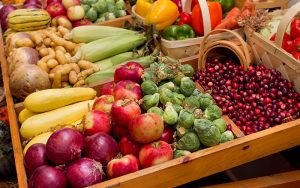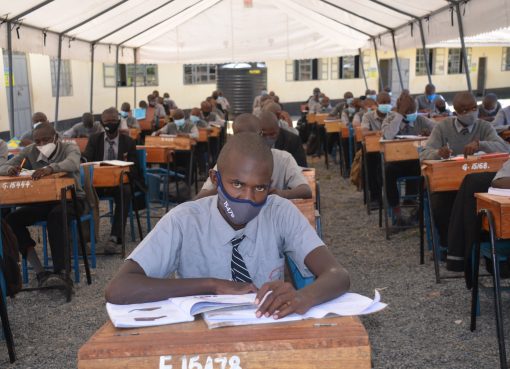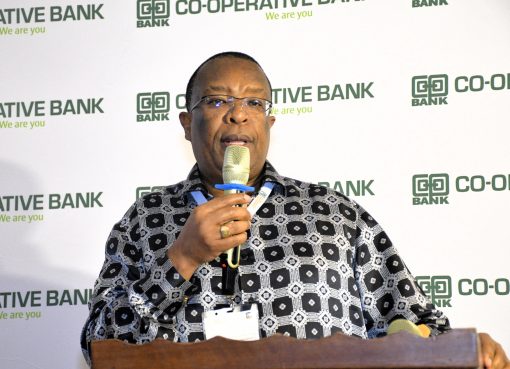There is urgent need to transform and modernize Agricultural Sector as a strategy of reducing the cost of food, alleviation of poverty and to deliver 100 percent food and nutrition security.
Agriculture Principal Secretary (PS), Prof. Hamadi Boga, said that agriculture is the bedrock of the country’s development and its transformation is critical to the growing economy such as that of Kenya’s.
Speaking during the ongoing National Agriculture Summit in Nairobi, the PS added that governments formulated Agricultural Sector Transformation and Growth Strategy (ASTGS) will transform the country’s agricultural sector and make it a regional powerhouse.
“The Government formulated this strategy 2019 – 2029 that takes an evidence based approach with a focus on Counties as the centers for implementation and delivery,” he said.

The Strategy, the PS explained, has not only shifted the burden of action to the County Governments but also to the private sector, industry players, entrepreneurs, development partners and civil society to help in driving the agenda.
Prof. Boga further said that the strategy prioritizes three anchors, namely, increase of small-scale farmer, pastoralist and fisher folk incomes, increase agricultural output and value-addition and also boost household food resilience.
“The ASTGS is expected to cost up to Sh 440 billion over five years out of which Sh 230 billion will go into agriculture specific costs while Sh 210 billion will be in agriculture supportive spending including power, roads and price stability within national treasury,” the PS said
With the right approach, Prof. Boga was optimistic that up to 80 percent of costs can be financed through public private partnerships (PPPs), particularly in the agro-processing and arable land flagships.
The Government together with development partners, he said will in turn need to finance 20 percent of cost which includes subsidies, extension and the enablers.
“To meet this obligation, the government needs to raise an additional Sh 8 to Sh 10 billion per year to cover their financing obligations to the strategy which is a 30 percent increase in current disbursed budgets.
This strategy is anchored in the belief that food security requires a vibrant, commercial and modern agricultural sector that sustainably supports national priorities, commitments to the Malabo Declaration under the Comprehensive Africa Agriculture Development Programme (CAADP) and the United Nations Sustainable Development Goals (SDGs).
Dr. Bimal Kantaria, the Co-Chair of the National Private sector led Agriculture Sector Apex Body said that as agriculture continues to play a vital role to the bulk of population and to propel the country’s economic growth, there is need for a united, innovative and proactive approaches that addresses all issues across the value chain while co-ordinating interventions from government, private sector, farmer organization and development partners.
The idea, he added, is to make sure that all are speaking in one voice for the good of the industry and leaving no one behind.
“This summit is historic considering it is the first time we are doing this. We hope that by the end of the meeting, we will have come up with a unique way of identifying the major challenges affecting the sector and have a structured way of addressing them while instituting mechanisms that will strengthen the new partnership complete with metrics to measure commitment and progress. Time is ripe for us to transform the agriculture sector,” said Dr. Kantaria.
Lee Karuri, KEPSA Foundation Chairman, said that the power of collaboration, especially in a sector so crucial for millions of households and the economy cannot be gainsaid.
“It is easier to bolster our commitments if we speak in one voice as an industry and that is why this conference is timely. We want to expedite our commitments to the sector and we can only achieve this through partnership,” Karuri said.
The agricultural sector in this country is dominated by small holder farmers who contribute about 80 percent of the agricultural production which is mainly subsistence, rain-fed with low mechanization levels.
It is faced with myriad of challenges such as limited access to affordable high quality inputs and equipment, inadequate agricultural infrastructure support and agriculture financing, inadequate research and extension support systems and also markets.
The government’s aspirations to achieve the ‘Big Four’ agenda on Food and nutrition security by 2022 is to reduce the cost of food as a percentage of income from 45 percent to 25 percent, halve the number of food insecure Kenyans from 10 percent to 5 percent and reduce chronic malnutrition among children under 5 years from 26 percent to 19 percent.
It further wants to increase Agriculture contribution to GDP by 48 percent from 26 percent, Support 1,000 Production SMEs and 600,000 direct and indirect jobs and also increase average income of farmers, fishermen and pastoralists.
By Wangari Ndirangu





